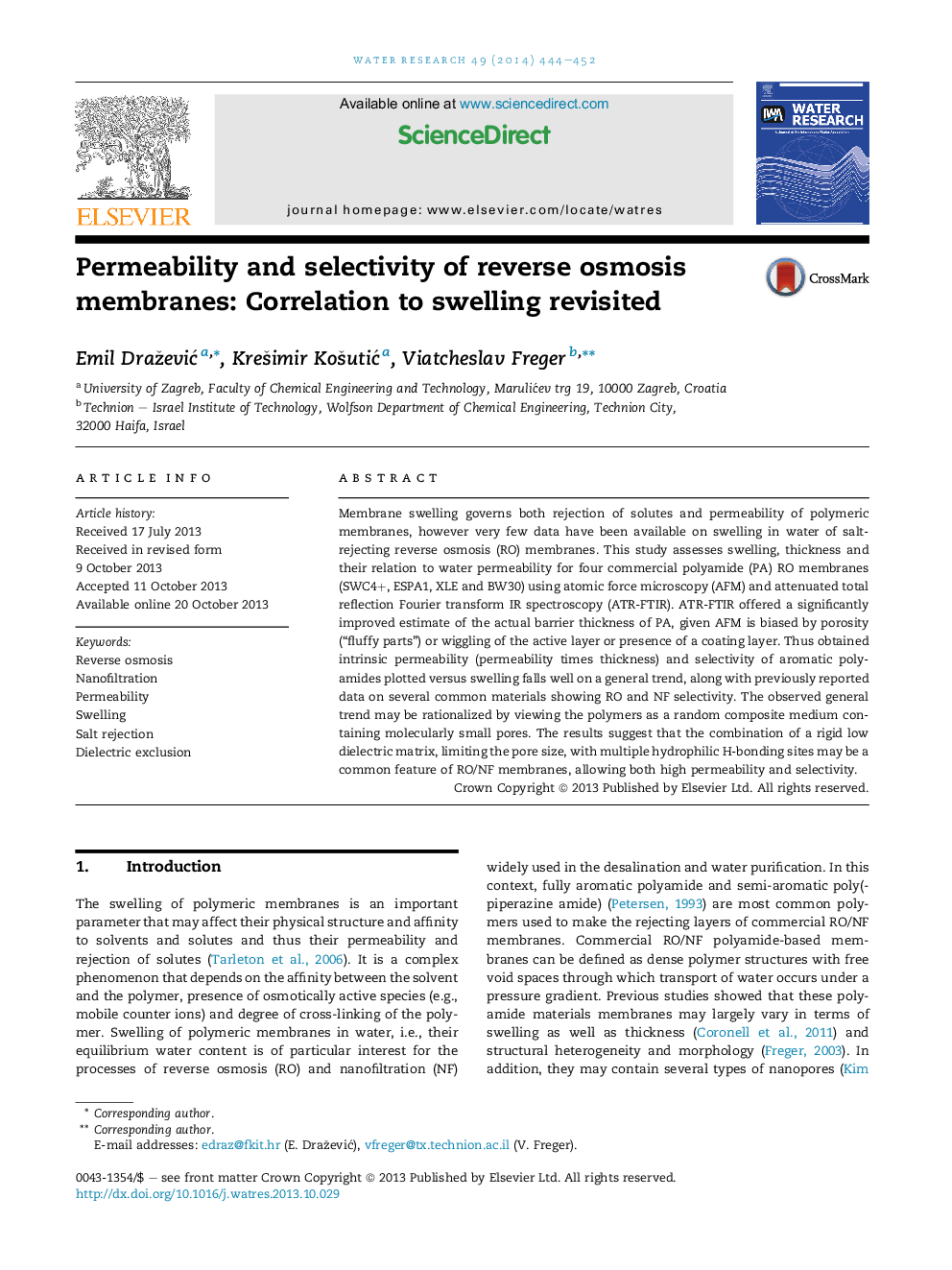| Article ID | Journal | Published Year | Pages | File Type |
|---|---|---|---|---|
| 4481724 | Water Research | 2014 | 9 Pages |
•Swelling is well correlated with intrinsic water permeability of RO membranes.•Swelling is well correlated with intrinsic salt permeability of RO membranes.•Different membranes materials fall on one general trend.•Trend may be generalized as flow through porous medium.•Dense low dielectric polymer with H-bonding sites explain permeability and selectivity.
Membrane swelling governs both rejection of solutes and permeability of polymeric membranes, however very few data have been available on swelling in water of salt-rejecting reverse osmosis (RO) membranes. This study assesses swelling, thickness and their relation to water permeability for four commercial polyamide (PA) RO membranes (SWC4+, ESPA1, XLE and BW30) using atomic force microscopy (AFM) and attenuated total reflection Fourier transform IR spectroscopy (ATR-FTIR). ATR-FTIR offered a significantly improved estimate of the actual barrier thickness of PA, given AFM is biased by porosity (“fluffy parts”) or wiggling of the active layer or presence of a coating layer. Thus obtained intrinsic permeability (permeability times thickness) and selectivity of aromatic polyamides plotted versus swelling falls well on a general trend, along with previously reported data on several common materials showing RO and NF selectivity. The observed general trend may be rationalized by viewing the polymers as a random composite medium containing molecularly small pores. The results suggest that the combination of a rigid low dielectric matrix, limiting the pore size, with multiple hydrophilic H-bonding sites may be a common feature of RO/NF membranes, allowing both high permeability and selectivity.
Graphical abstractFigure optionsDownload full-size imageDownload high-quality image (128 K)Download as PowerPoint slide
